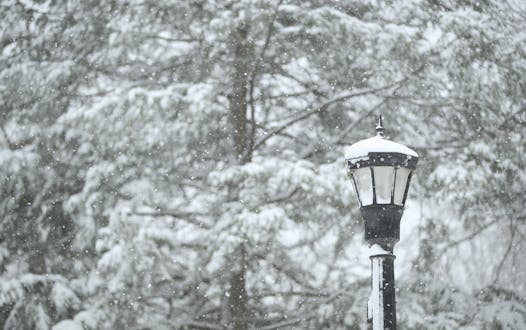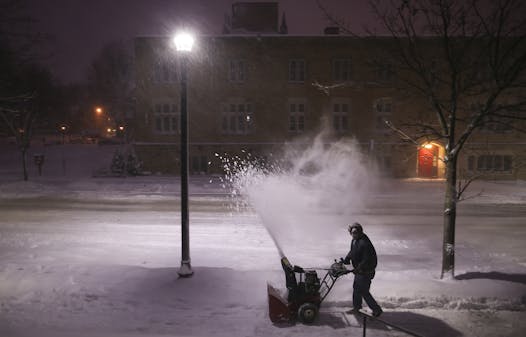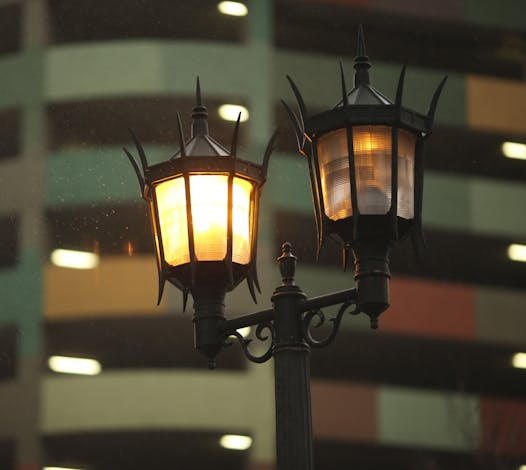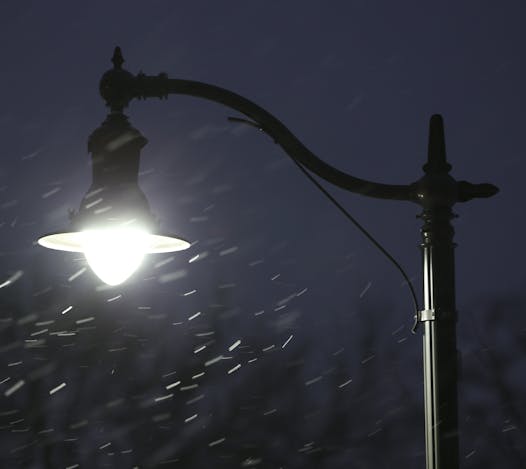The previous owners of our house left a memoir written by a man who'd lived there as a boy in the 1920s. He described a detail of urban urchinhood long forgotten: When the lamplighter would replace the wicks, he'd give them to the children, and they'd draw pictures on the sidewalks with the black, sooty sticks.
At the time of the writing, streetlights were common. Kids grew up with light in the night the way they grew up with voices in the air, coming out of the radio grilles. The parents of those children knew the soft hiss of gas lamps. But their parents might have been present the day the Great Light snapped on and carved out a space where the night lost its reign.
In 1883 an electric-light company put eight arc lights on a 257-foot-tall pole in Bridge Square, a long-gone part of downtown where Nicollet and Hennepin met.
Night was banished; you could stand outside City Hall at midnight and read a newspaper. You'd think people would have clamored for more, but many were wary of electrical lights, thinking they'd catch fire. Solution? Gas! Because that's much safer.
From the 1880s on, the Minneapolis Gas Light Co. had the sole contract to provide nighttime illumination in the city. By the 1920s, however, fear had abated. That clever Edison fellow was bathing Gotham with his electrical lights, and people who went to the Chicago Columbian Exposition of 1893 surely returned with tales of brilliant white light splashed on the gleaming bleached structures. So, according to the Minnesota Historical Society, the last gas lamp in Minneapolis went dark in 1924.
Nowadays, we take our electrical streetlights for granted, until we're walking along and the light above clicks off. (Oh, that's not an omen at all, you think. Thanks.) Perhaps because they're ubiquitous and dependable, we give their existence little thought, and their styles even less. When you start to look around with streetlights in mind, though, you realize how many shapes and styles we have — and how we could probably do with fewer.
Name that style
The city's master plan for streetlight design has six official styles: the Acorn, so named for the shape of the globe; the Lantern, a straight-sided version of the Acorn; the Shoebox, whose name tells you how artful and streamlined its contours appear; the Modern Shoebox, which adds a few artful curves; the Teardrop, which hangs the light from a pole that reminds you of a shepherd's crook; and the Parkway Fixture, a modified Teardrop with a shade that tells you you're in a park area, if you couldn't otherwise tell.
Those are the styles the city has determined that we'll use going forward. But we've inherited some more. There's the Cobra, so named for its teardrop shape on the end of a pole that rises up like a charmed serpent. There's the frosted glass bowl, stuck on a pole like a frozen albino Tootsie Pop. Usually found in some dour Carter-era public development with lots of dark brick and bare concrete, or scattered around the park system — where you'll also find those boxy lights with rounded edges. Quite modern at the time, but that's the problem. The time has passed.
And then, there are all sorts of variations. The Government Center plaza has a two-bulb shoebox-style, because they thought it looked cool. Some of the shoebox lights downtown have a glass bulb, some have a flat bottom because they've been upgraded to LEDs. Downtown has some tall thin gray teardrops that don't match anything else — but no one really pays them any notice.
The main surface streets are also a catalog of styles. You can glean something of a pattern: Acorns for residential streets; the occasional Cobra hanging off a bare wood pole because no one wanted to pay for Acorns; Lanterns for commercial; tall teardrops for intersections. But it's fairly hit-and-miss.
Consistency in LED
OK, it's an absolute mess.
And, in truth, our streetlights have always been a mishmash.
There's no consistency because there's no way to change everything all at once. But it will change over time — if not to a single style, then a single hue, as LEDs replace the old lights, and a crisp white light redefines the way we see the night.
It may be more clinical, less mysterious; the sidewalk will be a bright corridor, not pools of light between tenebrous penumbras. Which you prefer may be a matter of taste.
What won't change will be the stated civic goal, unchanged since the arc lamp flooded Bridge Square: Lit streets are safer streets.
Some grumble that the illumination of our cities constitutes light pollution, drowning out the chilly twinkle of the stars.
True: It would be nice to look up and see all the bulbs in the roof of the sky. Now and then, when the power goes out on a summer night, we can see constellations frozen in their eternal postures or see a hint of the numberless fires burning in the Milky Way. We marvel; we're all part of this, and it's lovely. But we're not primitives pointing to the heavens and imagining stories in the arrangements of bright things. We stopped cursing the darkness and learned how to make candles. After two nights without power we wish the streetlights would come on again. After three we wonder if people are considering a run on the grocery stores.
Our preference for traditional streetlights might strike some as nostalgia for the solid virtues of a mythical Main Street, but the fact that we'd rather choose the styles of the past over some cold Ikea lumen-faucet suggests that nighttime isn't when we want to be confronted with the antiseptic precision of modern design.
An old glowing globe, a row of boulevard sentinels among the leaves of the trees, just like they had a hundred years ago. A torch in the night. Perfect citywide consistency in styles would be nice, but as long as most are good-looking, and all of them work? That'll do.
James Lileks • 612-673-7858

Event will celebrate 20 years of Home of the Month contest and offer peek at top residential projects

Minnesota and other Democratic-led states lead pushback on censorship. They're banning the book ban

Some of comedy's biggest names converge on the Twin Cities this weekend






